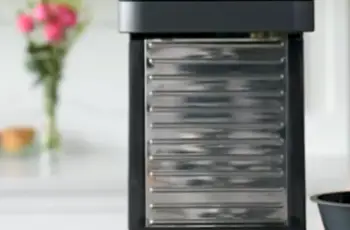When and How Often Should You Clean Your Coffee Maker?
People around the world want to kick start their day in the morning with a great cup of coffee. That coffee is usually made with a coffee maker that serves us every day. People who are a part of this ritual should understand that their coffeemaker needs cleaning quite often to continue to serve great coffee without any problems. The coffee maker saves you time and money from going to a coffee shop which is not what you want to do just after you woke up. So, if brewing a tasty cup of coffee is part of your daily morning routine then you should also learn how to clean your machine appropriately.
Your coffee maker gets clogged due to the buildup of residue from coffee and water minerals that get stuck inside the components of the coffee machine. This residue affects the taste of the coffee that comes out of the machine noticeably. The components inside the machine get jammed as well. The drip system of the coffee maker gets slow due to gunk buildup from the natural oil the coffee grounds leave behind. These natural oils do not wash off with normal water. The change in taste should be enough to give signals that your machine needs a clean ASAP. Some parts of the coffee maker like the brewing basket, the steamer on your espresso machine these components need regular cleaning after each use. The coffee residue creates a very wet environment inside the coffee machine that can usually lead to the buildup of yeast, molds, and bacteria. The water you use for your coffee can also be the culprit for creating problems for you. If the water is very rich in minerals it will block the paths for the water channels inside of the machine.
Cleaning Coffee Maker Frequently
Your Coffee maker needs to be cleaned after each use, The coffee grounds get stuck to the brew basket, carafe, and lid after each use. These components need to be cleaned after use. If the water you use is rich in minerals and maybe you don’t always wash the pitcher before you fill up your water reservoir with is going to eventually build up residue quickly that needs to be cleaned quite often. Some latest models of coffee makers now have the function of giving you the signal for cleaning. If you don’t want to wake up one morning and see that your coffee machine is requesting a forced downtime, then it is better to keep the machine clean in the first to avoid that.
Clean Your Coffee Maker with Soap
To start cleaning your coffee maker you will need a piece of cloth, dishwashing soap, a sponge and to dry paper towel. Right After using your coffee maker, you should clean the brew basket. Clean away any of the residual coffee grounds and the paper filter. Clean the brew basket and the permanent filter with soap and water using a sponge and then rinse them out with warm water. Dry them using a dry piece of cloth.
Clean the carafe following the same procedure. Use the soap and sponge to clean the lid and the inside of the carafe thoroughly and rinse it out with warm water. Then wipe it and let it dry. Clean the exterior of the coffee machine using the cloth slightly dipped in soap water. Make sure the cloth you are using is soft. Using cloth with a hard surface will scratch the exterior body. After cleaning with soap water use a paper towel to wipe down any residue. After every part of the machine is dry and cleaned reassemble the coffee machine.
Clean Your Coffee Maker with Vinegar
This is called descaling your coffee maker, it cleans the insides of the machine. This process should be done every three to six months depending if you use mineralized water or not. The vinegar washes away the mineral buildup and the natural oil that the coffee grounds leave behind. It unclogs the water channels and makes the machine more efficient.
This process is recommended for almost every drip coffee maker out there in the market. Still check the brand manual to check if the manufacturers approve of using vinegar to clean the machine. You will need water and vinegar to start this procedure of cleaning your machine. If you want you can do both clean the removable parts separate with soap and water and the insides of the machine using vinegar and water.
Take out your brew bast, carafe, and permanent filter out and clean it with soapy water. Next, take six cups of vinegar and six cups of water or equal parts of both that will fill the whole water reservoir of your coffee maker. Then turn on your coffee machine and start brewing that water and vinegar. Go through half the brewing cycle then stop the brewing. Let the mixture sit inside the pipe channels and the machine for more or less half an hour. Doing this will loosen up the mineral and natural oil that has been building up over the months. Normal water cannot clean this buildup but the vinegar cleans it up very easily. Then start the brewing cycle once again and let it all come out of the machine. Then again fill the water reservoir with water and start brewing again. You should do this water brew cycle twice to wash away the smell of vinegar from the machine.
Bottom Line
If you own some machine other than the traditional drip coffee maker, that would not automatically mean that you don’t have to clean your coffee maker. Brands like Keurig and Single-cup coffee machines need to be cleaned frequently as well.
Having a clean coffee maker ensures that you will have a good-tasting and steaming cup of coffee every morning. Coffee from an unclean machine can be unhealthy and cause problems to your body. Regular cleaning makes your machine more efficient.



